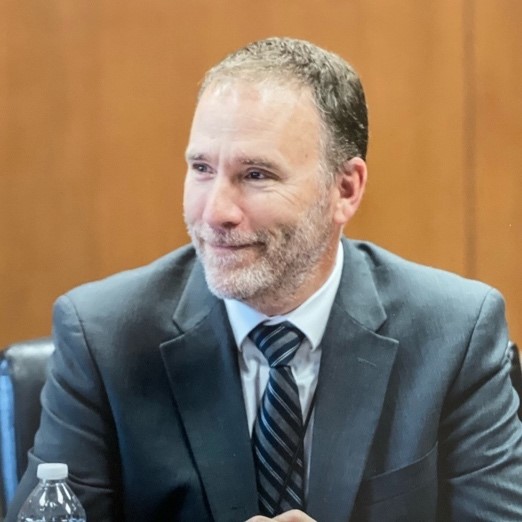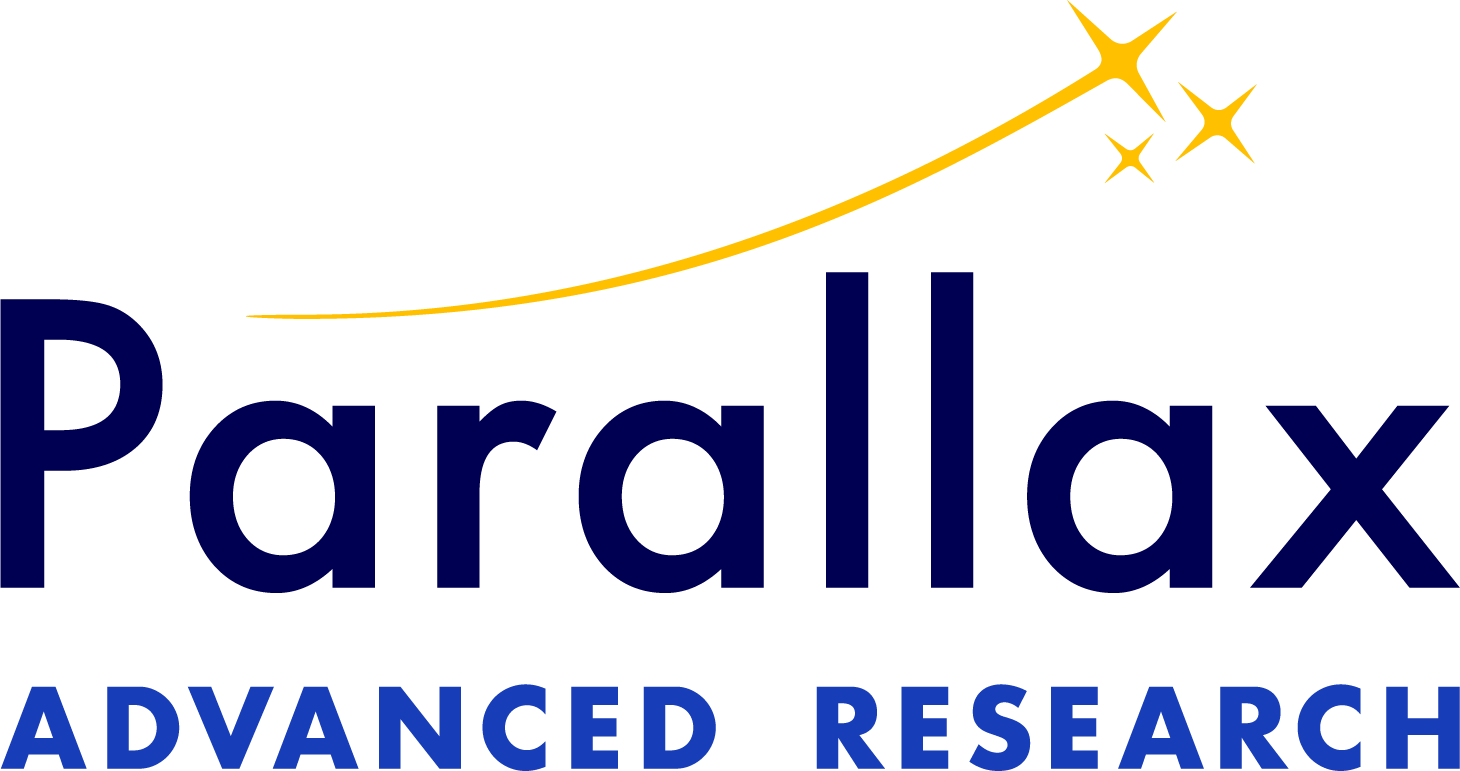Parallax Advanced Research’s and the Ohio Aerospace Institute’s newest VP of Advanced Air and Space Systems, Tim McCartney, has been a thought leader in the aerospace industry for several decades. He possesses a rich career with roots as controls engineer then Director of Aeronautics and has served with NASA’s Glenn Research Center and the United States Department of Defense. Parallax and OAI welcomes Tim to the team!

Q: Can you talk a little bit about your career journey, specifically your time at NASA’s Glenn Research Center?
McCartney: Looking back on an amazing almost thirty-nine years, I could’ve never imagined I would have that long of a tenure. I was lucky enough to have been a part of some amazing teams and learned from some of the best minds. I started way back in the Stone Age as an instrumentation and controls engineer and finished up the last four years of my tenure as a Director of Aeronautics at NASA Glenn Research Center. I had the opportunity to work with some of the most advanced technologies in the country for both commercial and defense applications. It is rewarding to have played even a small part in advancing some of those technologies.
Q: What were some of the key projects and achievements you are most proud of about your career?
McCartney: As a young test engineer, I had the responsibility of testing large, full scale supersonic propulsion systems in large wind tunnels all over the country. I had the opportunity to support a High-Speed Research program and run a full-scale engine test with the supersonic inlet in Russia, of all places. Because of these projects, I got to spend a lot of time in Russia in the mid-nineties. Doing that test and being trusted with that responsibility was amazing. Then my career took a turn into project management, and I did a lot of the work with the DoD, again took me all over the country with some incredible people. The most memorable achievements were the people and the teams that I got to work with that were so dedicated to supporting the nation’s aviation industry. They stand out to me more than any of the projects I worked on.
Q: How did your prior experience prepare you for your role at Parallax Advanced Research/OAI?
McCartney: I spent my whole career working with some of the smartest, most innovative minds in the country. It may have been humbling but I learned a long time ago that I am not the smartest person in the room. Trusting and empowering the teams that you're leading or working with is really what makes them succeed. Oftentimes I saw my role as providing resources, rather than getting in the way of things that might be impeding their progress and allow them to do what they do best. I think that's one of the most important things I learned: how to build and lead a diverse team of people with different educational backgrounds and technical expertise. I think that experience more than anything else has taught me how to lead and accomplish success in advancing technology. That's what I hope to bring to Parallax and OAI.
Q: You played a pivotal role in strengthening the partnership between NASA and the Air Force Research Laboratory (AFRL). Can you share more about your work in fostering these collaborations and how it has impacted the work you’re doing at Parallax/OAI today?
McCartney: This work is one of the reasons I'm here and found this role interesting. Jim Free, NASA’s associate administrator, asked if I'd be interested in a one-year detail at AFRL due to my experience with DoD. Jim and Ricky Peters, then Executive Director of the Air Force Research Laboratory, wanted to improve collaboration between the two largest federal labs in the state. There was no job description, just "go do good." I attended the commander's staff meeting and worked on creating awareness of collaboration advantages for both sides, emphasizing that together, we're stronger, which we certainly are. I want to bring that spirit to Parallax and OAI, leveraging our vibrant defense and aerospace network to address national challenges and fostering collaboration and moving away from a winners-and-losers mentality.
Q: What brings you to work at Parallax/OAI?
McCartney: When I retired just a few months ago, I had no plans to go back to work. I was going to relax and spend more time with my lovely wife. A short while after I left NASA, Dennis Andersh, Parallax president and CEO, called with descriptions of the kinds of things Parallax and OAI were working toward, one of which was bringing the state together. That coupled with the opportunity to work relationships across the state and with specific technologies that I had experience with – I couldn't say no. The excitement of a new challenge was too great to decline.
Q: What is your vision for the Advanced Air and Space Systems Division?
McCartney: Maintaining the sense of innovation and vision that has given me success in the past. I am hoping to expand and leverage the unique talents that exist within Parallax and OAI, as well as recruit talents as we need them to grow and impact the business. Although I have done this job for almost forty years, being in a new place with new teams, I start with listening and learning from the experts. My job is to support my team and provide them with the resources they need to grow, thereby strengthening the division.
Q: How do Parallax and OAI position themselves to be at the forefront of the most exciting advancements in air and space systems?
McCartney: I'm still learning about how Parallax and OAI operate, now being on the private side after years in government. What stands out is their focus on collaborations with academia, industry, and government agencies—what we call "the Science of Intelligent Teaming (TM)." This approach attracts top talent and leverages unique opportunities. Dennis and Dr. John Sankovic, EVP for Research and Development and President of Ohio Aerospace Institute, excel at staying connected with stakeholders, like AFRL, NASA, and DARPA, which is crucial for staying ahead in aerospace advancements.
Q: You have been recognized with numerous awards, including the NASA Outstanding Leadership Medal. Can you share your leadership philosophy and how you motivate your teams to achieve excellence?
McCartney: I've been fortunate to work with some of the smartest people, and any recognition I've received is thanks to them. My leadership philosophy includes: 1) Checking your ego at the gate—it's all about the team. 2) Always assuming noble intent, which makes collaboration and finding better solutions easier. 3) Doing whatever you're asked to do if it's safe and legal, and taking opportunities to grow whenever possible. In the end, we’ll always be better for it.
Q: What opportunities do you see for growth and innovation in the aerospace industry, particularly in Ohio?
McCartney: Though I was born in Pennsylvania, I was raised in Ohio and believe the sky is the limit here. The more I learn about the aerospace industry in Ohio, the more optimistic I become. We have AFRL, NASA, top universities, and a strong manufacturing base. Ohio is the number one supplier for Boeing and Airbus, which is amazing! We need to educate people and identify opportunities for growth, aiming to make Ohio the Silicon Valley of the aerospace industry. Success will come from working together across the state, understanding that rising water raises all boats.
###
About Parallax Advanced Research & The Ohio Aerospace Institute
Parallax Advanced Research is a 501(c)(3) private nonprofit research institute that tackles global challenges through strategic partnerships with government, industry, and academia. It accelerates innovation, addresses critical global issues, and develops groundbreaking ideas with its partners. With offices in Ohio and Virginia, Parallax aims to deliver new solutions and speed them to market. In 2023, Parallax and the Ohio Aerospace Institute formed a collaborative affiliation to drive innovation and technological advancements in Ohio and for the nation. The Ohio Aerospace Institute plays a pivotal role in advancing the aerospace industry in Ohio and the nation by fostering collaborations between universities, aerospace industries, and government organizations, and managing aerospace research, education, and workforce development projects. More information on both organizations can be found at Parallax and OAI websites.
